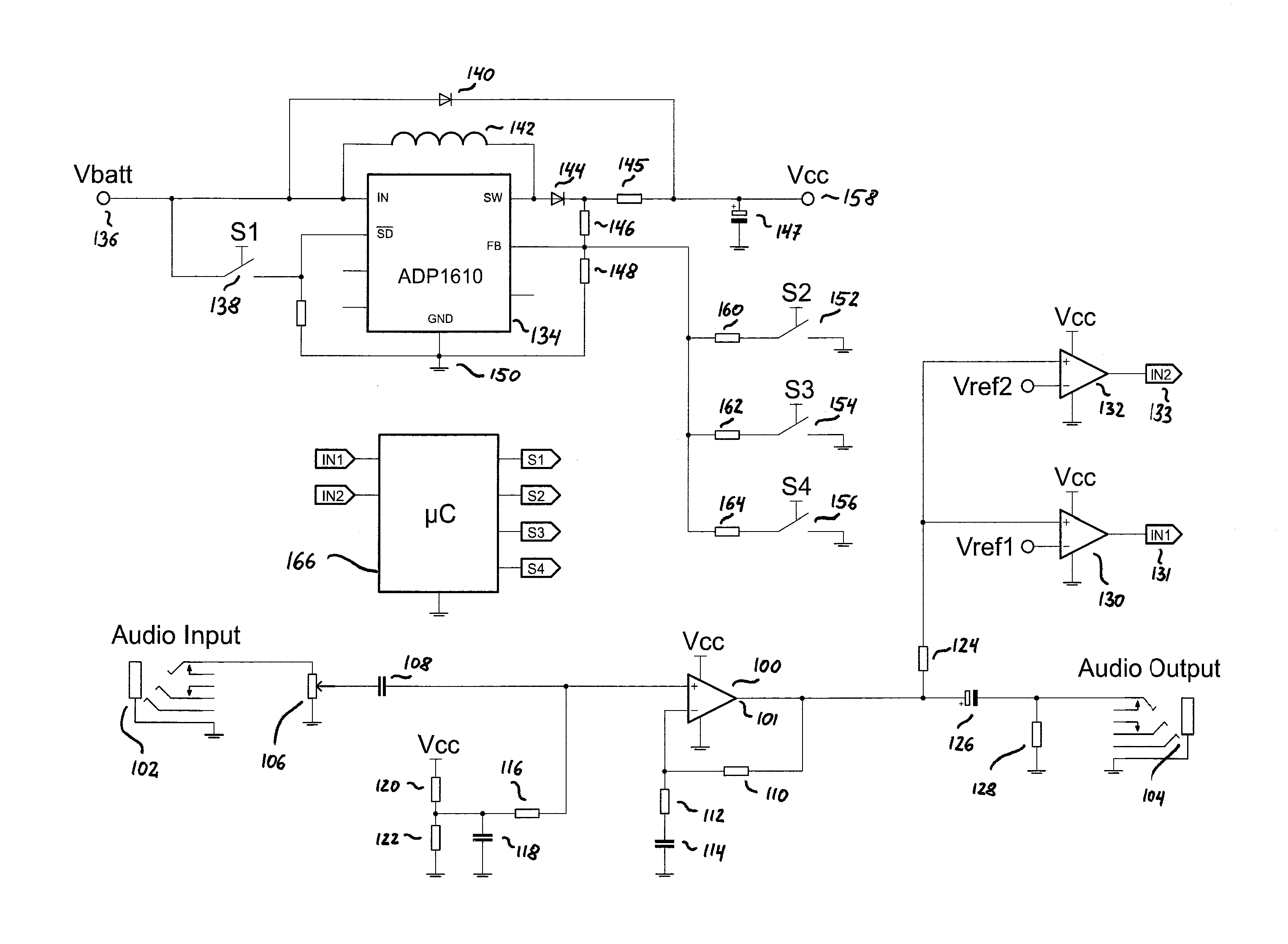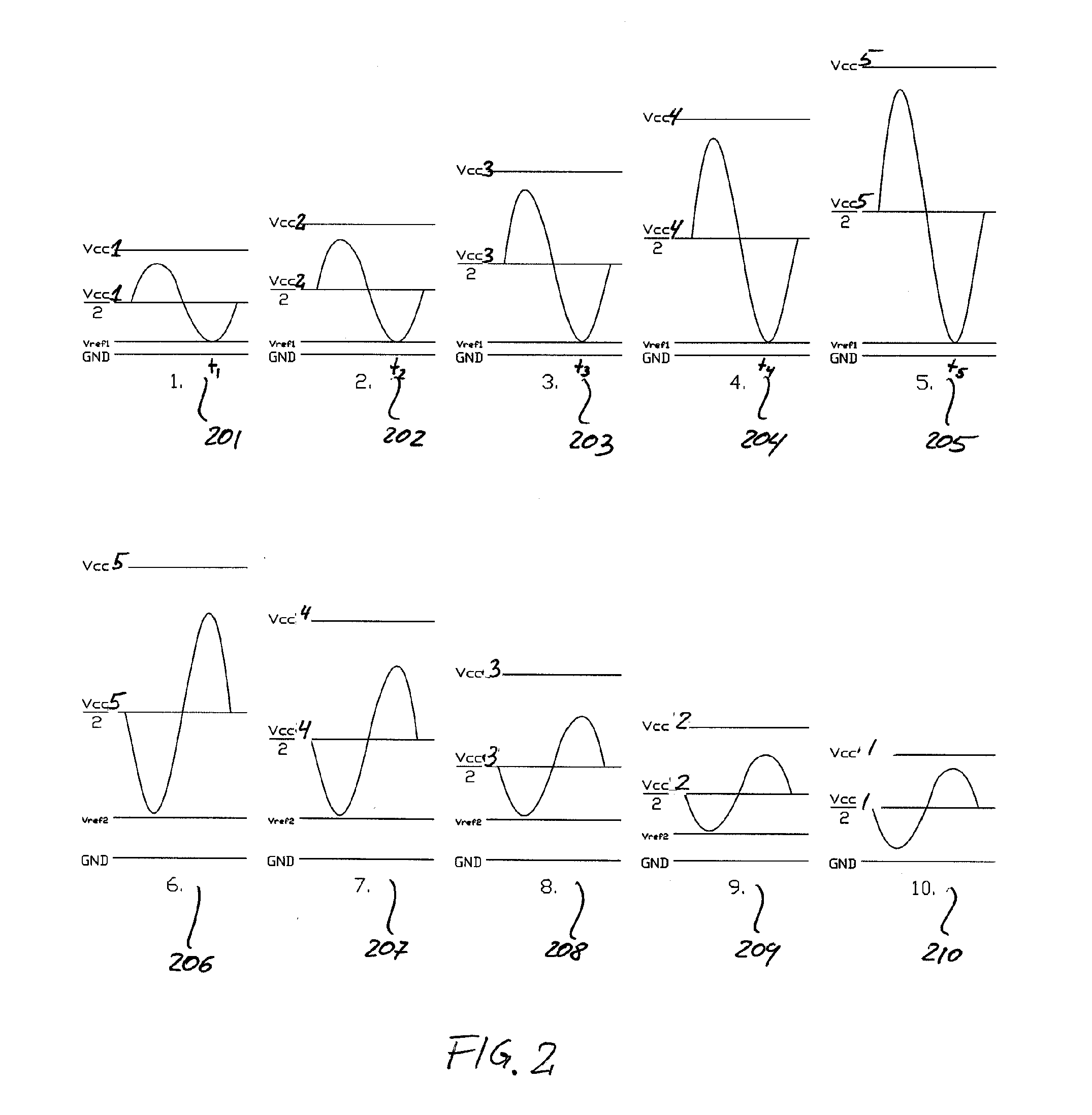High efficiency audio amplifier
- Summary
- Abstract
- Description
- Claims
- Application Information
AI Technical Summary
Benefits of technology
Problems solved by technology
Method used
Image
Examples
Embodiment Construction
[0013]Referring to FIG. 1, a circuit diagram of an exemplary class G audio amplifier circuit 1 in which the principles of the present invention may be advantageously practiced is illustrated generally. The exemplary audio amplifier circuit 1 comprises an operational amplifier 100, which is configured to amplify an audio signal received from input connector 102, and provide an amplifier audio output signal to output connector 104. Connectors 102 and 104 may be standard 2.5 mm, 3.5 mm, or 6.4 mm stereo jacks. Input connector 102 may be used to connect an audio source, e.g. a portable MP3 player, a cellular telephone, a radio or the like. Output connector 104 may be used to connect a headphone, a speaker or the like.
[0014]The amplitude of the audio output signal at output connector 104 and thereby the volume of an attached speaker or headphone can be adjusted through potentiometer 106. Potentiometer 106 acts as a voltage divider for the audio input signal provided to input connector 10...
PUM
 Login to View More
Login to View More Abstract
Description
Claims
Application Information
 Login to View More
Login to View More - R&D
- Intellectual Property
- Life Sciences
- Materials
- Tech Scout
- Unparalleled Data Quality
- Higher Quality Content
- 60% Fewer Hallucinations
Browse by: Latest US Patents, China's latest patents, Technical Efficacy Thesaurus, Application Domain, Technology Topic, Popular Technical Reports.
© 2025 PatSnap. All rights reserved.Legal|Privacy policy|Modern Slavery Act Transparency Statement|Sitemap|About US| Contact US: help@patsnap.com



